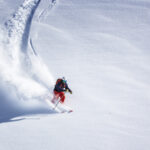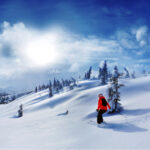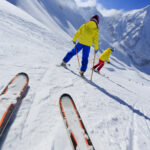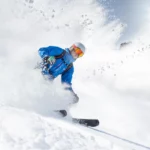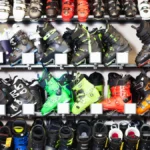How to Ski Powder

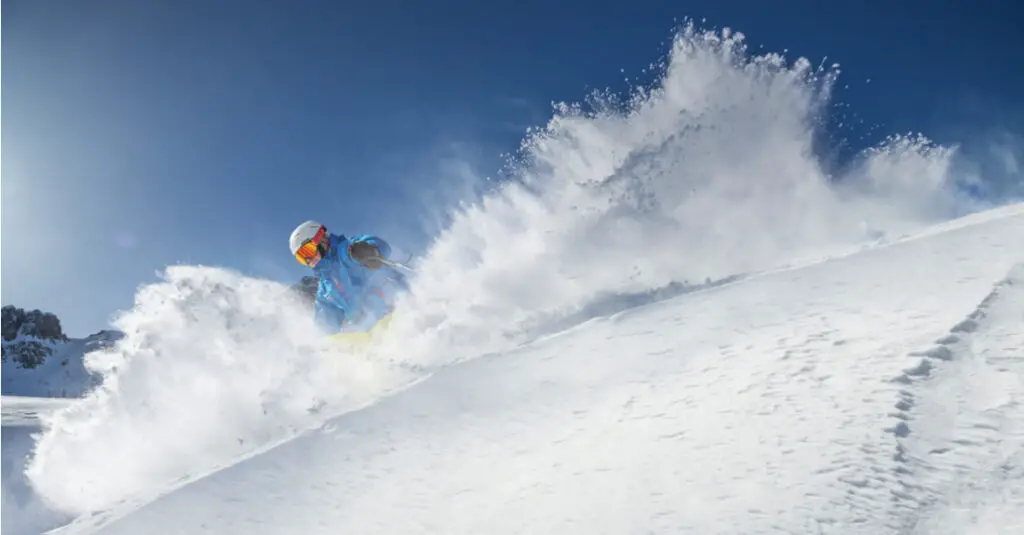
Short of taking a trip to outer space, powder skiing is the closest that most of us will come to a zero-gravity situation. Powder skiing is the type of skiing that is done on ungroomed trails covered by loose, freshly fallen snow. Whereas regular downhill skiing is usually done on tightly packed snow (and often on groomed trails) with most of the snow under your ski, powder skiing can mean anything from skiing in one-inch-deep snow to knee-deep (or higher) snow. Skiing through fresh knee-deep snow is one of the most amazing experiences that you can have on the mountain. But it is not as easy as it looks. Powder skiing requires skill, technique and the right equipment. Read on for some of the top tips for learning how to ski powder.
Don’t jump in before you’re ready
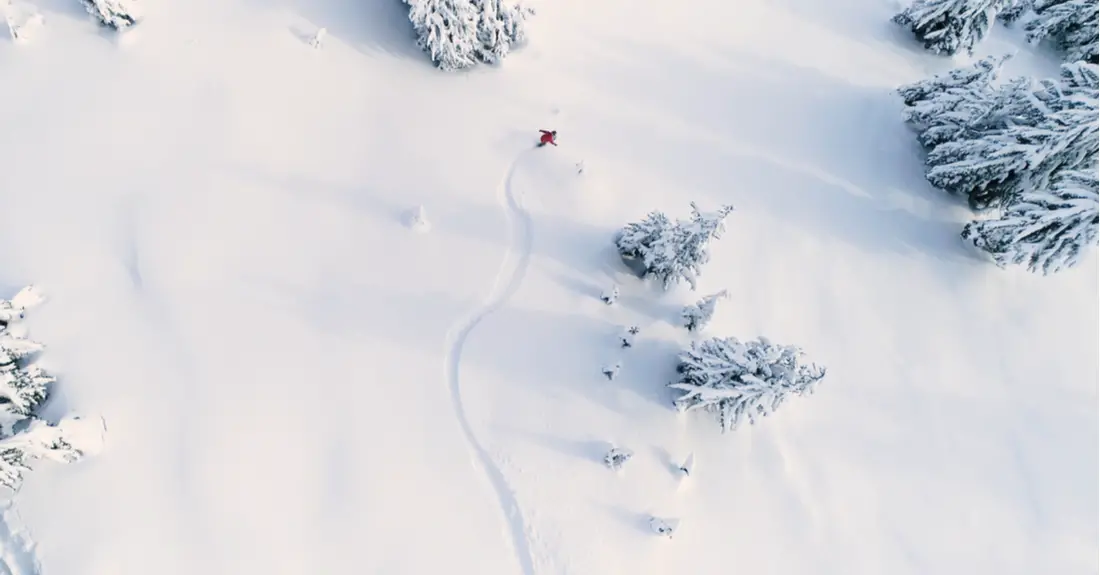
Thigh-deep snow may look light, fluffy and harmless. However, serious powder on difficult trails should only be attempted by skiers who have adequate experience. This doesn’t mean that novice skiers can’t enjoy fresh powder. If you’re a beginner, the best way to practice in powder is to get an early start to the day and take a few green or blue runs in fresh powder. Once you’ve mastered skiing in ankle-deep powder, start to work your way up in depth.
Slow down
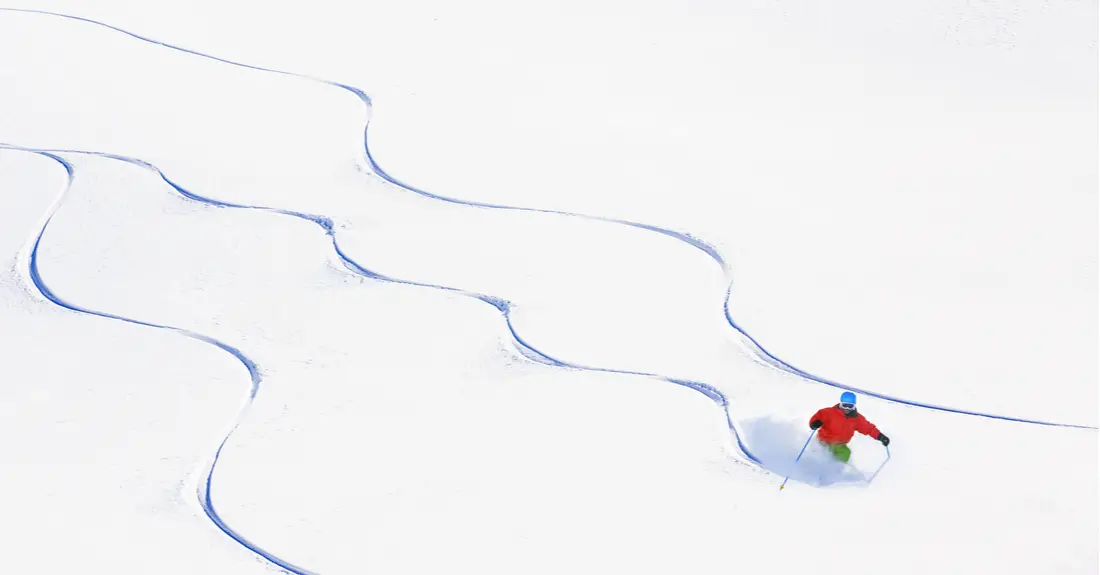
It should go without saying that powder skiing is slower than groomed downhill skiing. You’re going to have to think a lot more about your technique and plan your route in advance so that you don’t get stuck in extremely deep snow. To plan a route, take time to survey the terrain from the top of the mountain, and then periodically as new territory enters your line of sight. Watch out for trees, sharp trail turns, moguls and hidden obstacles. When assessing your route, think about where you ultimately want to end up at the end of the run.
Watch out for trees
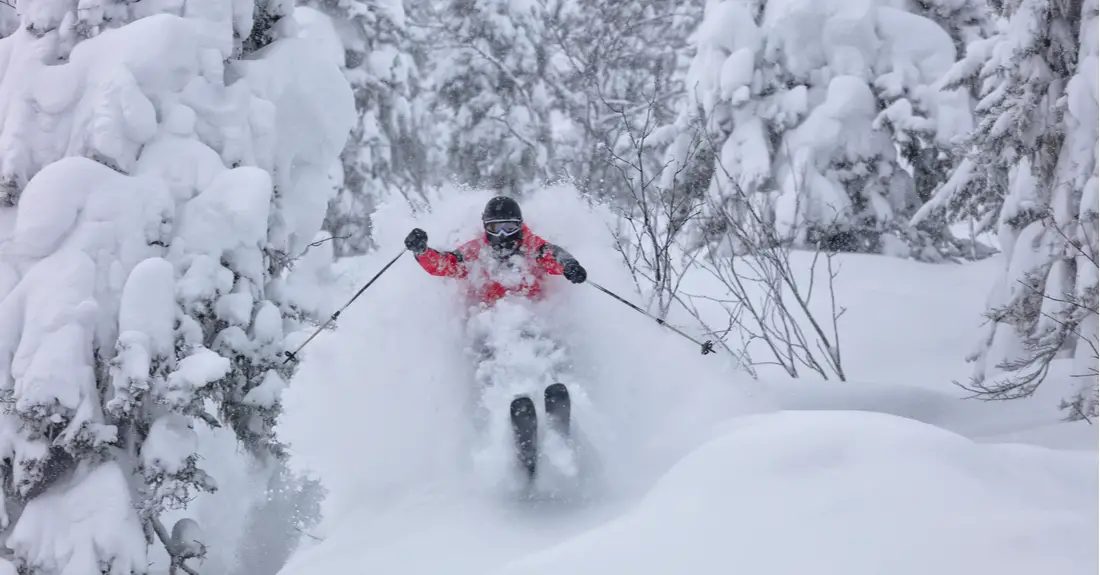
Tree wells are one of the biggest dangers on the mountain – especially after fresh snowfall. Tree wells are the hidden lower part of a tree that’s surrounded by deep snow.
Not only is it difficult to judge the depth of a tree well, but as snow accumulates around a tree with each snowfall, the branches prevent the snow from packing in the same condensed manner that it does on unobstructed ground. This creates a pocket of loose and unstable snow that sort of acts like quicksand. If you get trapped in a tree well, it can become a life-threatening situation. Therefore, it is vital that you plan your route and give yourself enough time and space to steer clear of possible tree wells.
Make wide turns
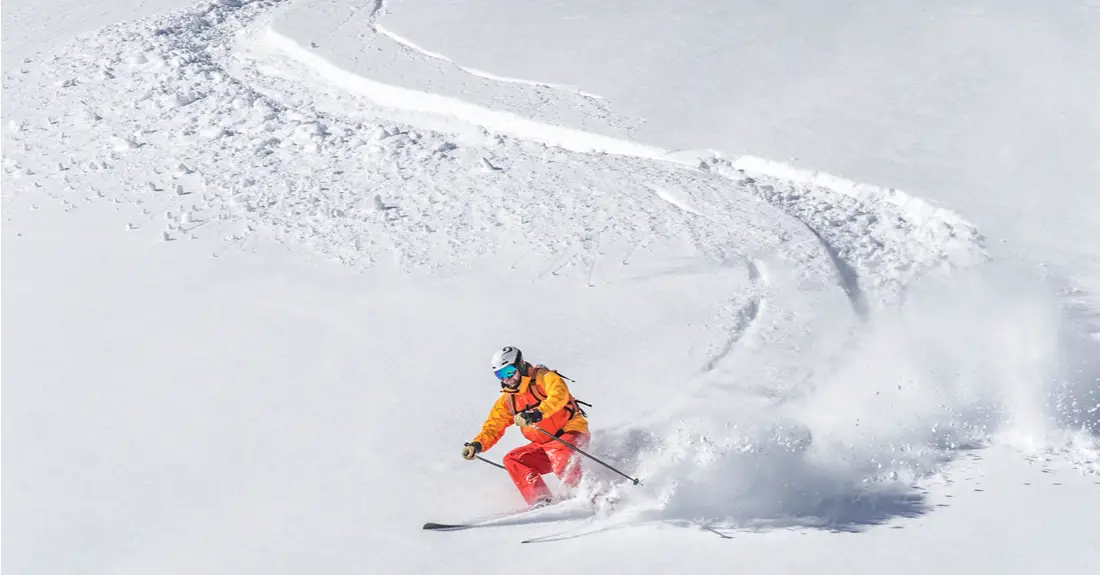
The resistance from powder snow makes turning quickly somewhat of a challenge. Be sure to give yourself enough space and time by making wide turns. If you find yourself waiting until the last minute, you may just end up gridlocked to the point where you have to remove a ski. Removing and putting on a ski is a pain under any conditions, but it is extra hard with snow covering your entire ski and boot.
Assume the “porpoise” position
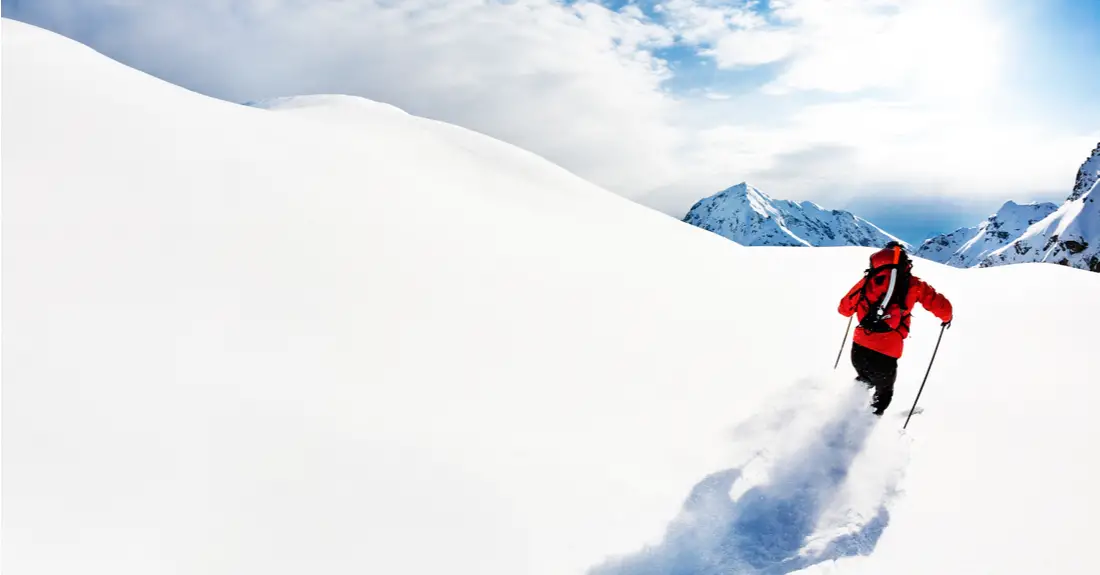
When porpoises breach the water’s surface, they appear to gently rock backwards and forwards in the water. When skiing powder, you want to take the same approach, shifting your weight front to back on the snow’s surface for better control. This gentle rocking technique involves flexing and extending your foot to manage your trajectory, movement, foot position and speed.
Another reason to practice shifting your weight is because when skiing powder, you cannot rely on your edges for turning. Instead, you need to keep your center of gravity low and steer with your body weight, shifting side to side as you would on moguls as well as front to back. You should practice this in light powder before moving into thicker snow.
Make sure you have the right equipment
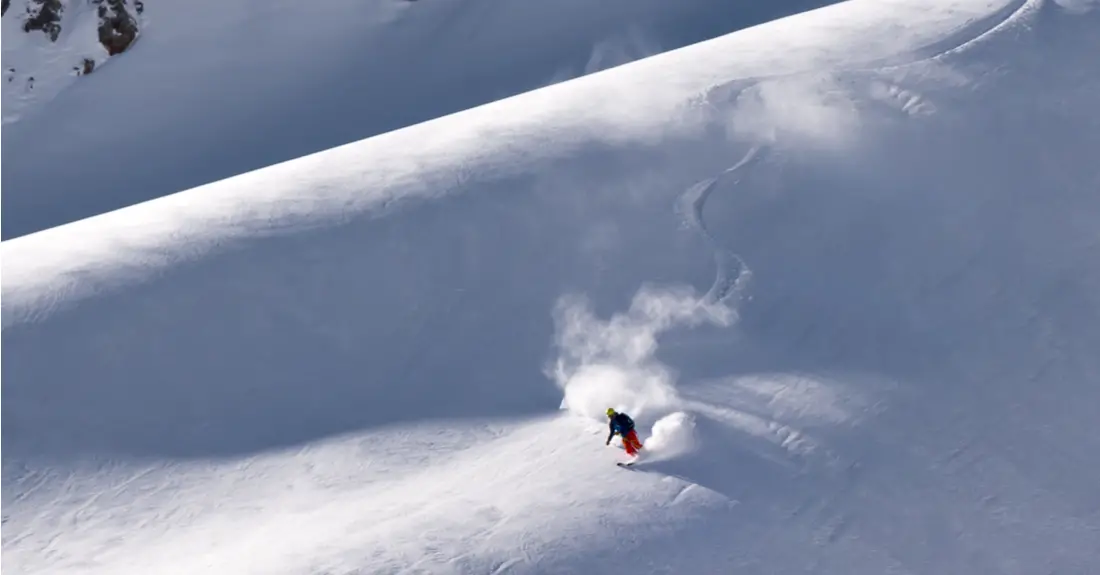
Powder skis should be just a little bit wider than your boot to provide more surface area. Like snowshoes, wider skis will help distribute your weight and keep you from sinking into deep snow. You will also want a ski that has both tip and tail flare. This curvature should be more dramatic than basic downhill skis because more angled tip curves are better at handling changes in gradient, terrain and snow depth. Ultimately, the right powder skis for you will depend on the types of conditions you expect to encounter, as well as your ability and preferred ski style. The best advice is to get professionally fitted by an expert who can assess your needs.
The most important thing about powder skiing is to always prioritize your safety. Never ski out of bounds or alone in an area that you’re not familiar with. Be sure to have an avalanche beacon on you at all times, stay updated with current weather and avalanche reports, and always tell someone else where you intend to ski and what time you expect to be back.
